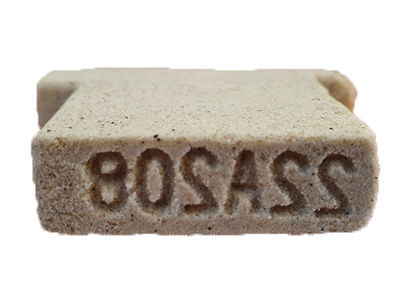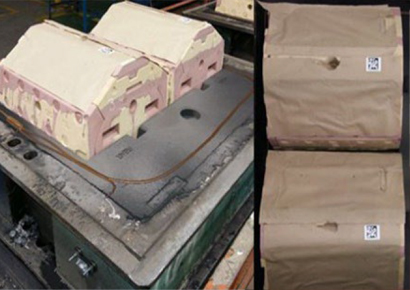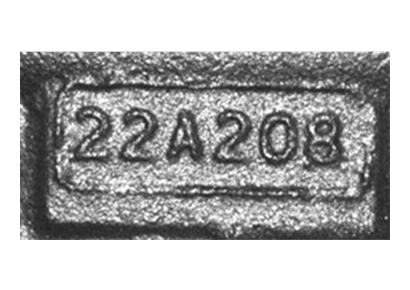SinterCast Cast Tracker
“More Measurements, More Control”.
SinterCast Cast Tracker® provides complete traceability of every casting; from core production through to pouring and shake-out, by linking the core history, moulding history, and the liquid metal history in a single database. With Cast Tracker, castings evolve from production batches to individual components with unique process histories. Cast Tracker provides Industry 4.0 traceability of the castings; prevents out-of-spec core packages from being poured; and enables engineers to determine and eliminate the root cause of metallurgical defects.
Core Tracking / Casting Marking
Cast Tracker begins by engraving a unique identification code (future casting marking) into a Tracker Core. The engraved marking can also be obtained on a separate Tracker Core which is inserted into the core package at assembly to define the moment of inception and to apply the unique embossed identification code on each casting. Reading the embossed code on the casting provides complete traceability between the casting and every stage of the foundry process through the Cast Tracker database.

Core Package Labelling
For every Tracker Core, a corresponding 2D Matrix Label is printed and affixed to the core package. The Tracker Camera reads the label as the core package leaves the assembly area, and again when the cores are set into moulds. Registration at core setting identifies the unique code of each core package and determines the shelf storage time of the casting.

Flask Tracking
The identification of each core package is linked to an RFID Tag affixed to the flask. The flask ID is read by an antenna at pouring to identify the flasks, and thus, the castings being poured from each ladle. The handshake between Cast Tracker and Ladle Tracker provide continuous traceability of the core and liquid metal histories, including the cast sequence within the ladle.

Casting Tracking
Reading the embossed code on the casting provides complete traceability between the casting and every stage of the foundry process through the Cast Tracker database – from inception to shakeout and from melting to pouring – for traceability, process optimisation, and metallurgical troubleshooting. The database can also include results from microstructure and chemistry analyses, visual and quality controls before and after machining. The results are summaries in Performance Summary Reports that can be generated on demand. All data are saved in a central database that can be fully accessed by the foundry engineers.

Cast Tracker Benefits
- Traceability begins at core assembly (inception event)
- Quantitative measurement and control of core storage time
- Handshake with Ladle Tracker at pouring (birth event) links core history with liquid metal history
- Automatically prevent out-of-spec, or unidentified, core packages from being poured
- Comprehensive database for root-cause defect identification, including cast sequence within the ladle
- Elimination of manual data entry
- Eliminate manual data recording and paper records
- Multiple data sources organised in a single process database
- Industry 4.0 traceability to define process efficiency improvements, to prevent the production of out-of-spec castings, and to determine the root cause of metallurgical defects
- Real-time monitoring of the entire casting process on any internet device
- Incorporate microstructure, visual inspection, and NDT results into the Cast Tracker database
More information, more control, more efficiency, more profit.
Less scrap, less frustration, less energy, less CO2.
Related Video
Dr Steve Dawson, President & CEO, presents a series of SinterCast Videos to provide overviews of Compacted Graphite Iron, CGI Engine Benefits, the SinterCast technologies for process control and Industry 4.0 traceability, and the overall SinterCast market development.